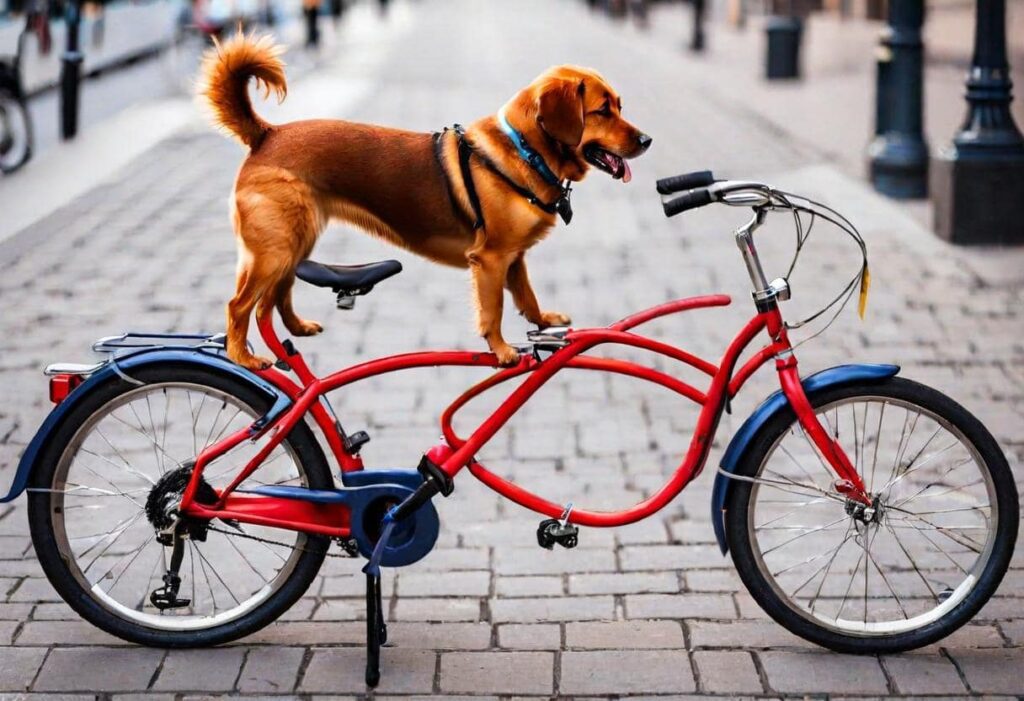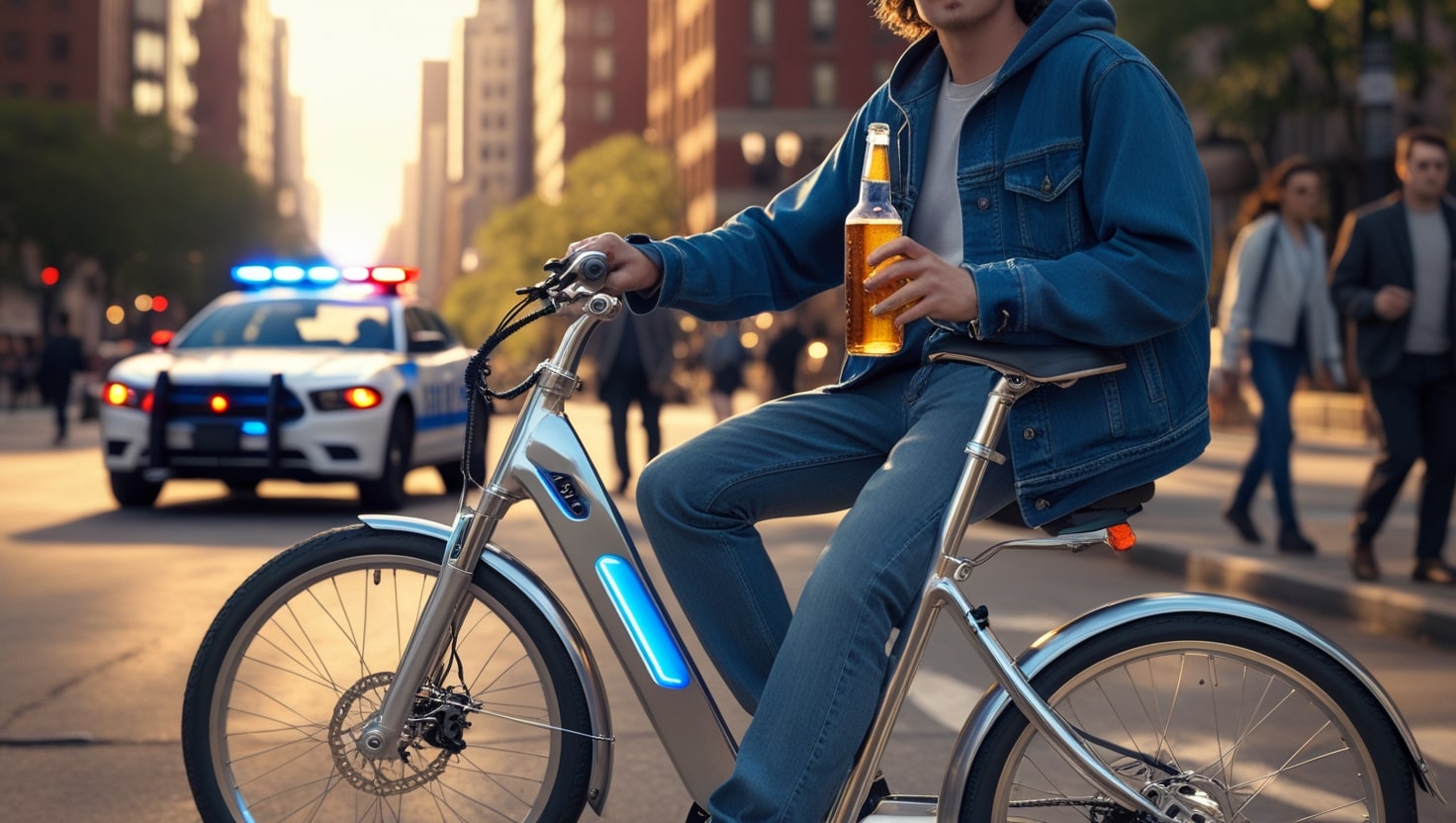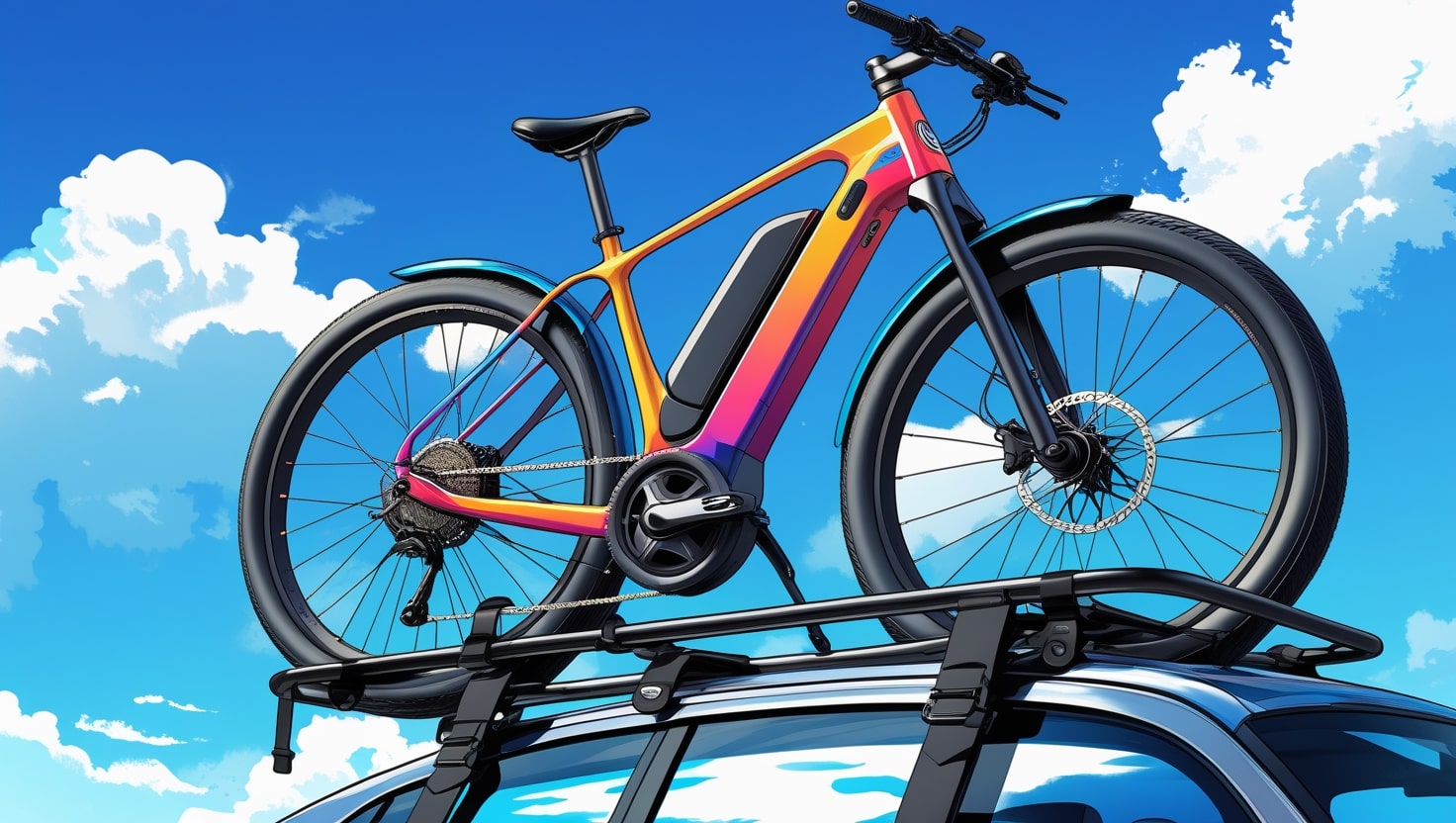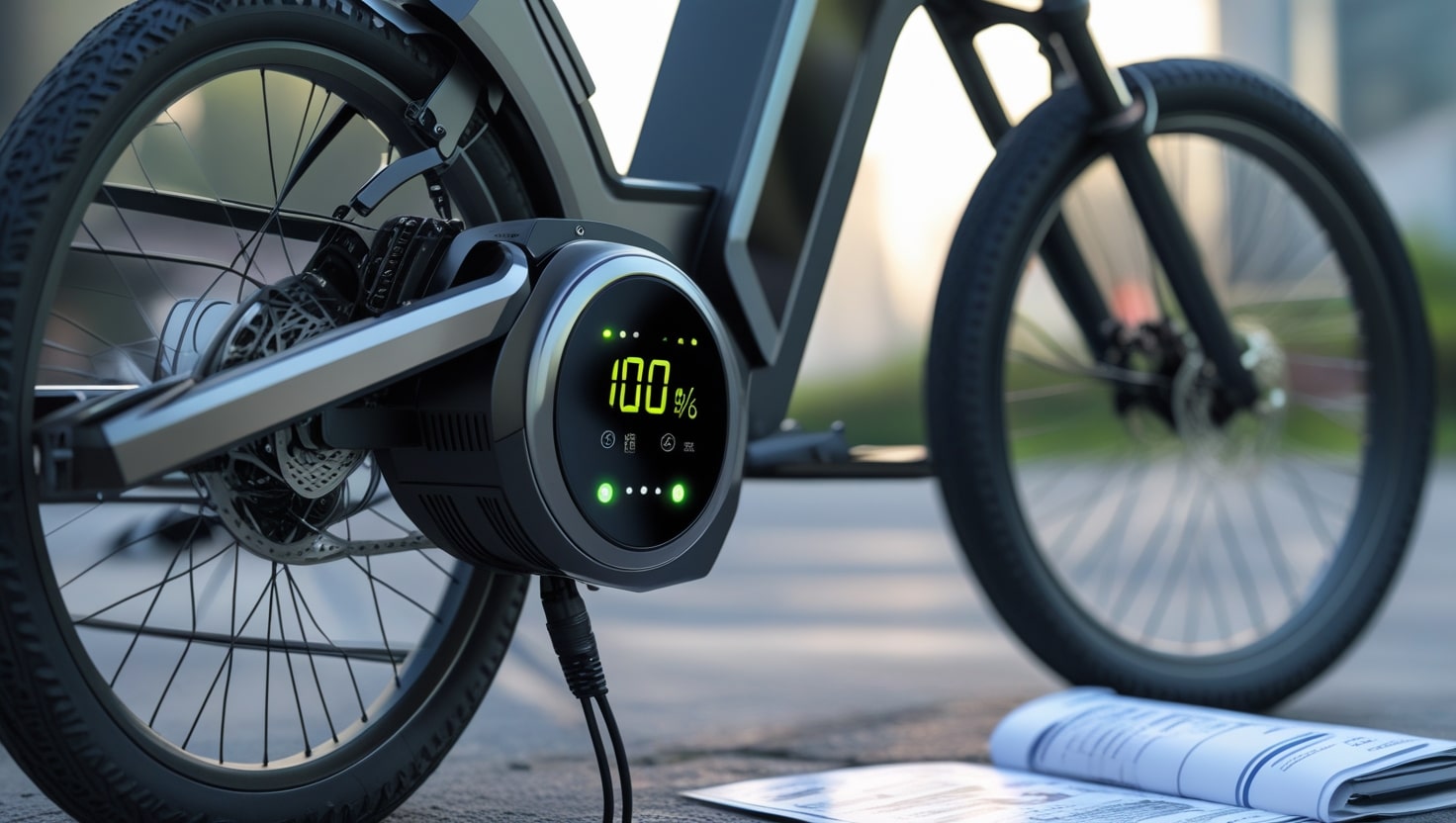Biking with a dog can be an exciting adventure. For the past couple of years, I’ve been biking with my dog, Moose, and it has become one of our favorite ways to explore the outdoors together.
The experience of zipping through trails with him is incredibly fun and it’s one of the few activities where I can match his high energy. Many folks often ask me how I dare to bike with my dog, their thoughts jumping straight to wrecks, bruises, and broken bones. I promise, we’re not doing anything too dangerous, though it can seem a bit intimidating at first.
To help you start, I’ve put together this guide with tips to keep you and your dog safe and happy while learning to bike together. It’s important to understand the basics to avoid any accidents. Begin by choosing trails that are suitable for both you and your dog.
Ensure your dog is trained to follow commands, which helps prevent potential wrecks and bruises. Gradually, you’ll both get accustomed to the rhythm of biking together. Remember, the goal is to have fun and explore while keeping the experience safe for your furry companion. So, let’s hit the trails and enjoy this adventurous way to bond with your dog. Here’s a complete guide about how to bike with a dog
Consult Your Vet
Before you start biking with your dog, it’s crucial to consult your vet to determine if it’s safe. Some breeds and individual dogs might have limitations or health conditions that make biking unsafe or uncomfortable.
Your vet can help by answering important questions: Can your dog handle the physical demands of biking? What are the risks and safety precautions you should take? Are there any long-term problems associated with biking? By addressing these questions, you ensure your dog stays safe and enjoys the ride without any health issues.

Invest in Proper Gear
Leashes
When it comes to biking with your dog, finding the right leash is crucial. There are many bike leashes on the market, and some are safer and more durable than others. It took me some trial and error to find the best one. In my experience, leashes that attach to your seat give too much control to your dog, causing the seat to move in unintended ways.
I particularly dislike rotating leashes that let your dog run behind the back wheel and switch sides. The risk of the rear tire getting entangled with the leash is high. It’s safer to keep your dog on one side, preferably the left, where most dogs are trained to heel. Be wary of leashes with “quick releases” that connect and disconnect easily. They may seem convenient, but I had one break after a few uses.
Now, I use the bike tow leash. It’s a little pricey, but it’s the best strap I’ve ever used. This leash keeps my dog a safe distance from the bike and on the left side. It’s stiff yet flexible, allowing the dog to take cues from the bike. The low mounting point prevents the dog from controlling or tipping the bike. Even though Moose is reasonably trained, he can’t destabilize the bike if he lunges sideways.
The design also lets him propel the bike forward, which has been a lifesaver for my tired legs on uphill rides. I often joke that it’s my budget-friendly electric bike. This leash ensures that my rides with Moose are enjoyable and safe for both of us.
Whatever you do, don’t hold or wrap a regular leash around your bike handlebars. If your dog decides to pull, you’ll lose all control of steering and may tip over. It’s dangerous for both you and your pup.
Harness
When biking with your dog, using a well-fitted harness is essential. Avoid attaching your dog to a bike by the collar, as this can cause strain on the neck. The harness must touch but still allow full movement. I prefer the Ruffwear front range harness, which I connect to the back clip. Once it’s properly fitted and adjusted, it works wonders. It’s easy to put on and take off, excellent for walking, and not bulky.
Additionally, regularly inspect your dog’s leash and harness to make sure they are in good working condition. This routine check ensures that your bike leash and harness remain safe and functional for every ride.
Related Post: Best Bike Paths Near Me?
What Else Do I Need?
When biking with your dog, it’s important to keep them well-hydrated and cool during the ride. I always pack a water bottle and a dish. In hot weather, I carry two to three water bottles. Carrying that much water might seem like a lot, but you can offload the weight from your backpack to the bike with some water bottle holders. Collapsible dog dishes are very convenient because you can clip them to your backpack, keeping nothing inside wet.
I also bring dog treats, a regular leash, poo bags, and plastic grocery bags. The regular leash is useful when we stop for rest or when my dog needs a bathroom break.

Basic Training and Socializing
Before you start biking with your dog, it’s crucial to teach them basic obedience. Teach your dog commands like “sit,” “stay,” and “heel” both on and off the bike. I also use “look at me,” “slow,” and “wait.” Your dog doesn’t need to be perfect; it just needs to grasp the basics.
Socialization is equally important. Introduce your dog to different environments, people, and animals to build confidence and calmness. When Moose was a puppy, we took him to a dog trainer who taught us a game called “Observe Don’t React.” This simple game rewards dogs with treats for watching and not reacting to various situations and stimuli. You start from a distance your dog can handle and get closer over time.
We played the game on busy sidewalks, in front of grocery stores, and outside dog parks. Over time, Moose went from a puppy who barked at everyone to a calm dog. I always recommend this game to people who want to minimize their dog’s anxiety and boost their confidence.
Introducing Your Dog to the Bike
Gradually introduce your dog to the bike by letting them explore and sniff it while it’s stationary. This should be a rewarding experience, so use treats and praise. Start with short walks with the bike, and then move on to eventually taking them on rides in a safe and controlled environment.
During the bike ride, encourage and reward your dog for good behaviour. Use verbal praise and treats to reinforce positive actions like staying by your side, responding to commands, and navigating obstacles calmly. This positive reinforcement will help build a strong bond between you and your dog, making biking fun for both of you.
Once your dog is comfortable biking, you can gradually introduce distractions such as other cyclists, pedestrians, and dogs. Increased exposure to these elements will make it easier for your dog to remain calm around potential distractions.

Start Slow
Just like humans, dogs need time to adjust to new activities. Start with short rides and gradually increase the duration and distance. This allows your dog to build up their stamina and adapt to the physical demands of biking.
A short warm-up walk before starting to ride the bike helps your dog stretch his muscles. Ending the ride with a cool down is also a good idea to gradually lower their heart rate.
Know Your Dog’s Limits
It’s important to respect your dog’s limits and fitness level when biking. Pay attention to their behaviour throughout the ride. Look for signs of fatigue, stress, or discomfort, such as excessive panting, lagging behind, or reluctance to continue. Adjust your pace or take breaks as needed to ensure your dog stays comfortable and safe.
Some dogs will push their limits because they are eager to please. This is often the case with Labrador retrievers and my own dog. To deal with this, I take longer breaks and carefully monitor his behavior. By doing this, you can make sure your dog enjoys the ride without overexerting themselves.

Stay Attentive and Responsive
When biking with your dog, always keep an eye out for anything that might distract or upset them. My biggest fear is off-leash dogs. Even a friendly off-leash dog can cause problems, so I stick to designated on-leash trails. If I see an off-leash dog, or an out-of-control on-leash dog, I turn the bike around. If there isn’t time, I stop the bike to avoid any incidents.
Choose Dog-Friendly Routes
Finding good routes is key to enjoying your bike ride with your dog. Look for local parks, nature reserves, or trail systems that allow dogs. Off-road trails are great options because they have fewer distractions, no vehicle traffic, and are gentle on your dog’s paws. I prefer multi-use paths that are shared by hikers and cyclists. These paths have wide lanes and are perfect for biking.
If possible, choose shaded trails to help prevent your dog from overheating. Trails near lakes or rivers are ideal, as they allow your dog, like my dog Moose, to cool off in the water. Always be aware of any local regulations regarding dogs in public spaces to ensure a safe and enjoyable experience.
Be Mindful of Temperature
Dogs are more susceptible to temperature extremes than humans. Avoid cycling during the heat of the day, especially when the temperature is high. Excessive heat can cause your dog to overheat or get burns on their paw pads from hot pavement.To be careful, I follow the rule of not biking with my dog when it’s over 20°C (68°F). On days near this temperature, we go slow. Every dog is different; some handle the heat better, but my dog is not a fan of hot weather.
Conversely, if you ride in the winter, consider using dog booties or other protective gear to protect your dog’s paws from snow, salt, and cold. It’s not uncommon for dogs to get frostbite on their paws.
Prioritize Your Safety
Always wear a helmet and hydrate yourself. Use hand signals to indicate turns and stops, and install a bike bell. Don’t hesitate to use your voice to advocate for yourself and your dog if other trail users are behaving irresponsibly. Remember, if you get injured, your dog is left alone attached to a bike. So, take care of yourself and don’t push your limits.

Schedule Regular Bike Maintenance and Check-Ups
Regular maintenance and check-ups will keep your bike in great working condition. Before every ride, check the tire pressure, brakes, and your bike leash. If you know nothing about bike maintenance, schedule regular tune-ups with a professional bike shop or mechanic. They can perform a thorough inspection to resolve any issues. These tune-ups may include wheel truing, drivetrain cleaning, bearing adjustments, and other necessary adjustments or repairs.
Never Force Your Dog
If your dog consistently displays fear, anxiety, or resistance to biking, do not force them. Not all dogs enjoy biking. Instead, find alternative activities that you can enjoy together. There are many other fun things to do, like hiking, fetching, agility, frisbee, swimming, scent training, camping, canicross, skijoring, and dock diving.
Happy Trails!
Every time I take Moose out on the trails, I feel incredibly lucky. It’s a great way to get outside and has definitely strengthened our bond. Plus, it’s a fantastic way to exercise a dog. I hope this post gives you the confidence to try biking with your dog and that you find similar joy in it. It’s quite simple; With some preparation, positive reinforcement, and some treats, you’ll soon be hitting the trails. Happy biking!
FAQs
How do I ride a bike with my dog?
Start by training your dog with basic commands such as sit and stay.
Use a well-fitted harness and a bike leash. Choose shaded trails to prevent overheating and bring 2-3 bottles of water. Avoid biking during the hottest parts of the day and always monitor your dog’s behavior. If your dog shows signs of fatigue or stress, take breaks. With a bit of preparation, you can enjoy biking together.
Is it hard to bike with a dog?
Biking with a dog isn’t hard if you prepare well. Start with short rides and gradually increase the distance. Use a well-fitted harness and a bike leash. Check tire pressure, and brakes, and ensure the leash is secure. Monitor your dog’s behavior for signs of fatigue or stress. Take breaks as needed. With some training and patience, you’ll find it’s an enjoyable activity.
Is it safe to carry dog on bike?
Carrying a dog on a bike can be safe if done correctly. Use a secure carrier or basket and ensure it is well-fitted to the bike. Check the tire pressure and brakes before every ride. Avoid biking in high traffic areas and monitor your dog for any signs of stress or discomfort. With the right preparation, biking with your dog can be a safe and enjoyable experience.
Where do you put your dog on a bike?
When biking with a dog, use a secure carrier or basket that attaches to the front or rear of the bike. Ensure it is well-fitted and comfortable for your dog. Monitor your dog for signs of stress or discomfort. Check the tire pressure and brakes before each ride. This setup helps keep your dog safe and makes the experience enjoyable for both of you.








